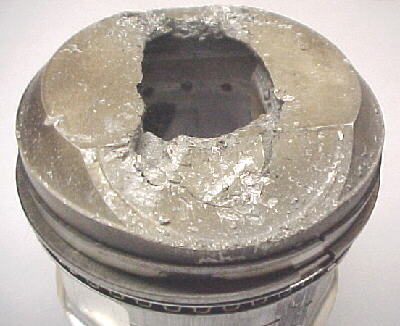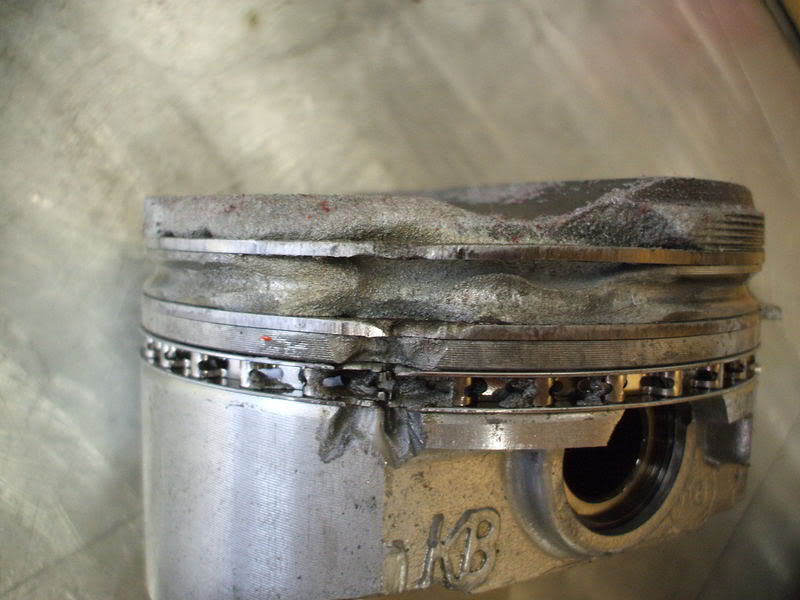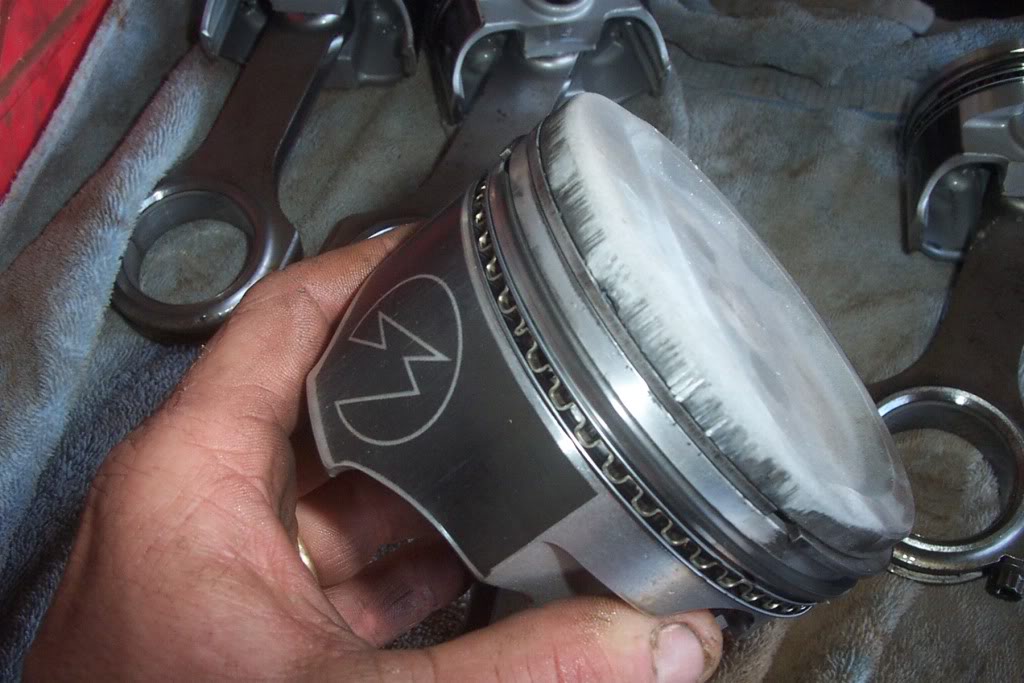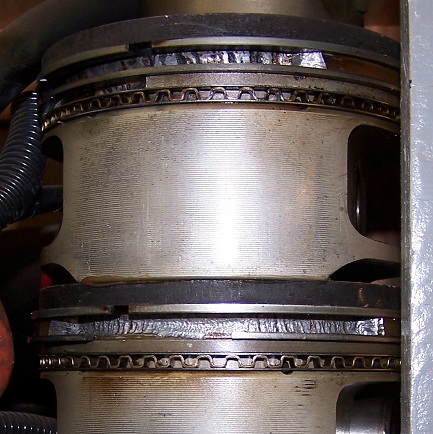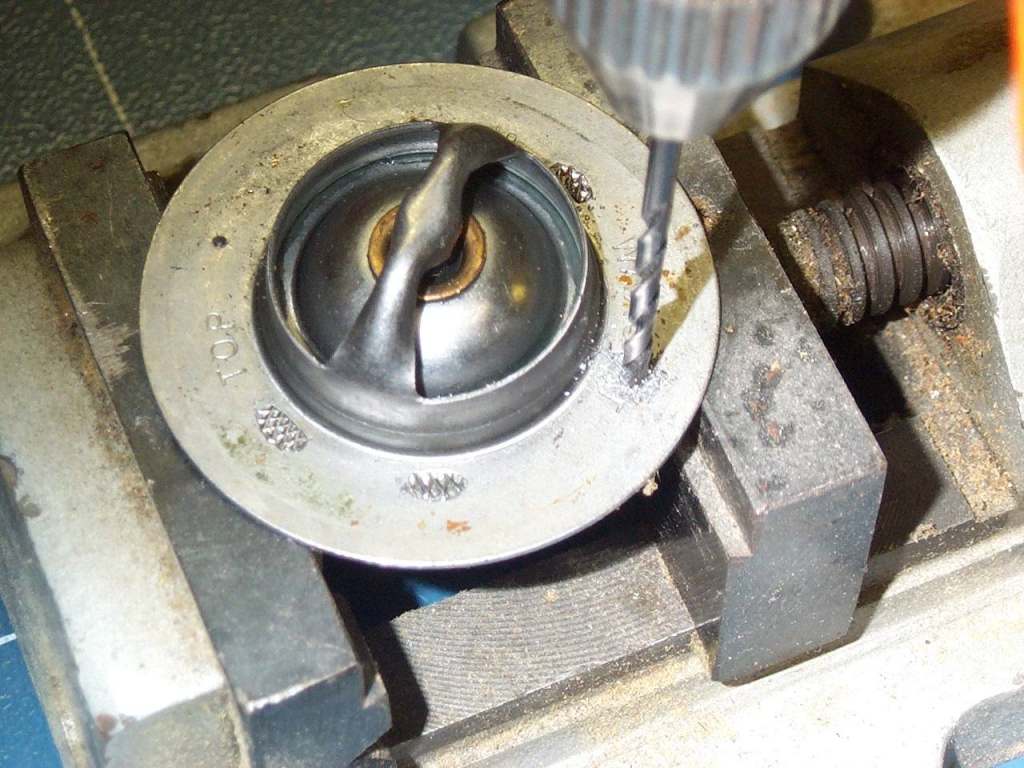http://www.autospeed.com/cms/A_110829/article.html
http://www.autospeed.com/cms/A_110830/article.html
http://www.misterfixit.com/deton.htm
http://www.autospeed.com/cms/A_110831/article.html
http://www.misterfixit.com/deton.htm
http://www.corvette-restoration.com/res ... ing101.pdf
http://www.streetrodstuff.com/Articles/Engine/Detonation/
http://www.babcox.com/editorial/ar/eb100145.htm
http://www.misterfixit.com/deton.htm
http://www.turbofast.com.au/racefuel10.html
http://www.kitcarmag.com/techarticles/eliminating_detonation_pre_ignition/index.html
back pressure tends to increase heat, simply because it reduces the full effect of the cooling the intake charge can provide
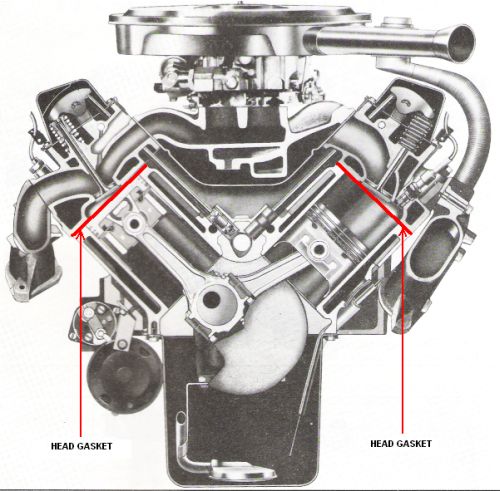
http://forum.grumpysperformance.com/viewtopic.php?f=56&t=495&p=613#p613
Taken from http://www.misterfixit.com/
WHAT IS DETONATION?
Detonation (also called "spark knock") is an erratic form of combustion that can cause head gasket failure as well as other engine damage. Detonation occurs when excessive heat and pressure in the combustion chamber cause the air/fuel mixture to autoignite. This produces multiple flame fronts within the combustion chamber instead of a single flame kernel. When these multiple flames collide, they do so with explosive force that produces a sudden rise in cylinder pressure accompanied by a sharp metallic pinging or knocking noise. The hammer-like shock waves created by detonation subject the head gasket, piston, rings, spark plug and rod bearings to severe overloading.
Mild or occasional detonation can occur in almost any engine and usually causes no harm. But prolonged or heavy detonation can be very damaging. So if you hear knocking or pinging when accelerating or lugging your engine, you probably have a detonation problem.
A DOZEN WAYS TO PREVENT DETONATION
1. Try a higher octane fuel. The octane rating of a given grade of gasoline is a measure of its detonation resistance. The higher the octane number, the better able the fuel is to resist detonation. Most engines in good condition will run fine on regular grade 87 octane fuel. But engines with high compression ratios (over 9:1), turbochargers, superchargers, or with accumulated carbon deposits in the combustion chamber may require 89 or higher octane fuel.
How a vehicle is used can also affect its octane requirements. If a vehicle is used for towing or some other application where the engine is forced to work hard under load, a higher octane fuel may be necessary to prevent detonation.
If switching to a higher octane fuel fails to eliminate a persistent detonation problem, it probably means something else is amiss. Anything that increases normal combustion temperatures or pressures, leans out the air/fuel mixture, or causes the engine to run hotter than normal can cause detonation.
2. Check for loss of EGR. The Exhaust Gas Recirculation (EGR) system is one of the engine's primary emission controls. Its purpose is to reduce oxides of nitrogen (NOX) pollution in the exhaust. It does this by "leaking" (recirculating) small amounts of exhaust into the intake manifold through the EGR valve. Though the gases are hot, they actually have a cooling effect on combustion temperatures by diluting the air/fuel mixture slightly. Lowering the combustion temperature reduces the formation of NOX as well as the octane requirements of the engine.
If the EGR valve is not opening, either because the valve itself is defective or because its vacuum supply is blocked (loose, plugged or misrouted vacuum hose connections, or a defective vacuum control valve or solenoid), the cooling effect is lost. The result will be higher combustion temperatures under load and an increased chance of detonation.
Refer to a service manual for the configuration and hose routing of your engine's EGR system, and the recommended procedure for checking the operation of the EGR system.
3. Keep compression within reasonable limits. A static compression ratio of 9:1 is usually the recommended limit for most naturally aspirated street engines (though some newer engines with knock sensors can handle higher compression ratios).
Compression ratios over 10.5:1 may create a detonation problem even with 93 octane premium gasoline. So unless an engine is being built to run on racing fuel, keep the compression ratio within a reasonable range for pump gasoline. This, in turn, may require using lower compression pistons and/or cylinder heads with larger combustion chambers. Another option would be to use a copper head gasket shim with the stock head gasket to reduce compression.
Retarding the cam timing can also lower cylinder pressures to reduce detonation at low r.p.m., but doing so hurts low speed torque which is not recommended for street engines or cars with automatics.
For supercharged or turbocharged applications, a static compression ratio of 8:1 or less may be required depending on the amount of boost pressure.
Another point to keep in mind is that boring an engine's cylinders to accept oversized pistons also increases the static compression ratio. So too does milling the cylinder heads. If such modifications are necessary to compensate for cylinder wear, head warpage or damage, you may have to use a thicker head gasket if one is available for the application or a head gasket shim (a dead soft copper spacer shim) to offset the increase in compression.
4. Check for over-advanced ignition timing. Too much spark advance can cause cylinder pressures to rise too rapidly. If resetting the timing to stock specifications doesn't help, retarding the timing a couple of degrees and/or recalibrating the distributor advance curve may be necessary to keep detonation under control.
5. Check for a defective knock sensor. Many late model engines have a "knock sensor" on the engine that responds to the frequency vibrations characteristically produced by detonation (typically 6-8kHz). The knock sensor produces a voltage signal that signals the computer to momentarily retard ignition timing until the detonation stops.
If the "check engine" light is on, check the vehicle's onboard computer system using the prescribed procedure for a "trouble code" that would correspond to a bad knock sensor (code 42 or 43 for GM, code 25 for Ford, or code 17 for Chrysler).
A knock sensor can usually be tested by rapping a wrench on the manifold near the sensor (never hit the sensor itself!) and watching for the timing change while the engine is idling. If the timing fails to retard, the sensor may be defective -- or the problem may be within the electronic spark timing control circuitry of the computer itself. To determine the cause, you'll have to refer to the appropriate diagnostic chart in a service manual and follow the step-by-step test procedures to isolate the cause.
Sometimes a knock sensor will react to sounds other than those produced by detonation. A noisy mechanical fuel pump, a bad water pump or alternator bearing, or a loose rod bearing can all produce vibrations that can trick a knock sensor into retarding timing.
6. "Read" your spark plugs. The wrong heat range plug can cause detonation as well as preignition. If the insulators around the electrodes on your plugs appear yellowish or blistered, they may be too hot for the application. Try the next heat range colder spark plug. Copper core spark plugs generally have a broader heat range than ordinary plugs, which lessens the danger of detonation.
7. Check for engine overheating. A hot engine is more likely to suffer spark knock than one which runs at normal temperature. Overheating can be caused by a low coolant level, a slipping fan clutch, too small a fan, too hot a thermostat, a bad water pump, or even a missing fan shroud. Poor heat conduction in the head and water jackets can be caused by a buildup of lime deposits or steam pockets (which can result from trapped air pockets).
8. Check the operation of the heated air intake system. The thermostatically controlled air cleaner's job is to provide a carbureted engine with hot air when the engine is cold started. This aids fuel vaporization during engine warm-up. If the air control door sticks shut or is slow to open so that the carburetor continues to receive heated air after the engine is warm, the added heat may be enough to cause a detonation problem -- especially during hot weather. Check the operation of the air flow control door in the air cleaner to see that it opens as the engine warms up. No movement may mean the vacuum motor or thermostat is defective. Also, check the heat riser valve to make sure it's opening properly, as it, too, can affect the air intake system.
9. Check for a lean fuel mixture. Rich fuel mixtures resist detonation while lean ones do not. Air leaks in vacuum lines, intake manifold gaskets, carburetor gaskets or the induction plumbing downstream of a fuel injection throttle can all admit extra air into the engine and lean out the fuel mixture. Lean mixtures can also be caused by dirty fuel injectors, carburetor jets clogged with fuel deposits or dirt, a restricted fuel filter or a weak fuel pump.
If the fuel mixture becomes too lean, "lean misfire" may occur as the load on the engine increases. This can cause a hesitation, stumble and/or rough idle problem as well.
The air/fuel ratio can also be affected by changes in altitude. As you go up in elevation, the air becomes less dense.
A carburetor that's calibrated for high altitude driving will run too lean if driven at a lower elevation. Altitude changes are generally not a problem with engines that have electronic feedback carburetors or electronic fuel injection because the oxygen and barometric pressure sensors compensate for changes in air density and fuel ratios.
10. Remove carbon deposits. An accumulation of carbon deposits in the combustion chamber and on the top of the pistons can increase compression to the point where detonation becomes a problem. Carbon deposits are a common cause of detonation in high-mileage engines, and can be especially thick if the engine consumes oil because of worn valve guides and seals, worn or broken piston rings and/or cylinder wear. Infrequent driving and not changing the oil often enough can also accelerate the buildup of deposits.
In addition to increasing compression, carbon deposits also have an insulating effect that slows the normal transfer of heat away from the combustion chamber into the head. A thick layer of deposits can therefore raise combustion temperatures and contribute to "preignition" as well as detonation.
Carbon deposits can often be removed from an engine that's still in service by using a chemical "top cleaner." This type of product is poured into an idling engine through the carburetor or throttle body. The engine is then shut off so the solvent can soak into and loosen the deposits. When the engine is restarted the deposits are blown out of the combustion chamber.
If chemical cleaning fails to remove the deposits, it may be necessary to pull the cylinder head and scrape the deposits off with a wire brush or scraper (be careful not to scratch the face of the cylinder head or engine deck!).
11. Check the boost pressure. Controlling the amount of boost in a turbocharged engine is absolutely critical to prevent detonation. The turbo wastegate bleeds off boost pressure in response to rising intake manifold pressure. On most late-model engines, a computer-controlled solenoid helps regulate the operation of the wastegate. A malfunction with the manifold pressure sensor, the wastegate control solenoid, the wastegate itself or a leak in the vacuum connections between these components can allow the turbo to deliver too much boost, which destroys the head gasket as well as the engine in short order if not corrected.
Improved intercooling can help reduce detonation under boost. The intercooler's job is to lower the incoming air temperature after it exits the turbo compressor. Adding an intercooler to a turbo motor that isn't intercooled (or installing a larger or more efficient intercooler) can eliminate detonation worries while also allowing the engine to safely handle more boost.
12. Change your driving habits. Instead of lugging the engine, try downshifting to a lower gear and/or accelerating more gradually. Keep in mind, too, that the engine and drivetrain have to be matched to the application. If you're working your engine too hard, perhaps you need a transmission with a wider gear ratio or a higher final drive ratio in the differential.
PRE-IGNITION
Another condition that is sometimes confused with detonation is "preignition." This occurs when a point within the combustion chamber becomes so hot that it becomes a source of ignition and causes the fuel to ignite before the spark plug fires. This, in turn, may contribute to or cause a detonation problem.
Instead of the fuel igniting at the right instant to give the crankshaft a smooth kick in the right direction, the fuel ignites prematurely (early) causing a momentarily backlash as the piston tries to turn the crank in the wrong direction. This can be very damaging because of the stresses it creates. It can also localize heat to such an extent that it can partially melt or burn a hole through the top of a piston!
Preignition can also make itself known when a hot engine is shut off. The engine may continue to run even though the ignition has been turned off because the combustion chamber is hot enough for spontaneous ignition. The engine may continue to run-on or "diesel" and chug erratically for several minutes.
To prevent this from happening, some engines have a "fuel cutoff solenoid" on the carburetor to stop the flow of fuel to the engine once the ignition is turned off. Others use an "idle stop solenoid" that closes the throttle completely to shut of the engine's air supply. If either of these devices is misadjusted or inoperative, run-on can be a problem. Engines with electronic fuel injection don't have this problem because the injectors stop spraying fuel as soon as the ignition is turned off.
CAUSES OF PRE-IGNITION
Carbon deposits form a heat barrier and can be a contributing factor to preignition. Other causes include: An overheated spark plug (too hot a heat range for the application). Glowing carbon deposits on a hot exhaust valve (which may mean the valve is running too hot because of poor seating, a weak valve spring or insufficient valve lash).
A sharp edge in the combustion chamber or on top of a piston (rounding sharp edges with a grinder can eliminate this cause).
Sharp edges on valves that were reground improperly (not enough margin left on the edges).
A lean fuel mixture.
Low coolant level, slipping fan clutch, inoperative electric cooling fan or other cooling system problem that causes the engine to run hotter than normal.
Detonation vs power
some of the major factors in your engines potential power, is the volumetric efficiency (how efficiently you fill and empty the cylinders) and the octane of the fuel used, compression ratio and detonation limits,
With detonation, prevention the main factors are
Ignition timing
Quench
FUEL OCTANE
DCR
and cylinder heat level
you’ll be fairly safe if you stay under
8.5:1 dcr at 170f degrees
8.25 dcr at 180f degrees
7.8:1 dcr at 210f degrees
and keep the quench in the .036-.043 range
heres some differant calculators
http://www.kb-silvolite.com/calc.php?action=comp2 http://www.wallaceracing.com/dynamic-cr.php
http://www.smokemup.com/auto_math/compression_ratio.php http://not2fast.wryday.com/turbo/compression/cranking_pressure.shtml
average the results
the numbers are for 92 octane premium gas run at a 14.7:1 a/f ratio
BTW heres a VERY SIMILAR GRAPH

[
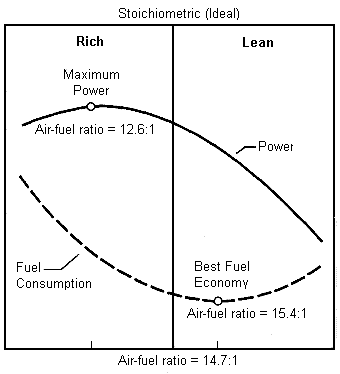
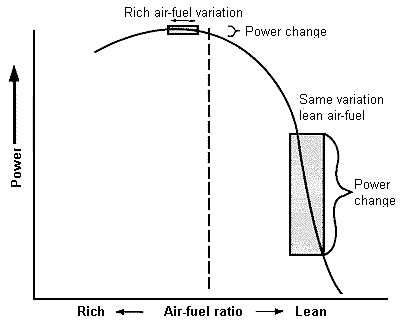
http://www.misterfixit.com/deton.htm]http://www.misterfixit.com/deton.htm
I won,t get into the extensive details of why, but heres what you can DO,
(1) retard the cam 4 degrees, (this tends to reduce your dcr and lower cylinder temps due to slightly lower DCR)
(2) add a pusher fan or in some way REDUCE your coolant temp, this tends to reduce the detonation tendency
(3) richen the air/fuel ratio to about 12.7:1 this tend to increase power and reduce the potential for detonation due to cooler cylinder temps)
(4)change to a spark plug two ranges colder and change the plug gap to .040, this tends (at least in theory)to reduce the plugs tip temp due to a lower electrical resistance of the spark jumping the gap)
(5) add some fresh coolant,and flush the radiator and install a 160 degree t-stat, some water wetter or purple ice ,in that coolant might help
(6) add a good multi spark ignition and have your distributor curve checked/modified to advance smoothly from 1000rpm to full advance at 3000rpm
(7) check for and remove any vacuum leaks
(8)next time the heads are off POLISH the combustion chambers, remove any sharp edges and make sure the QUENCH falls in the .037-.043 range
(9)swapping too aluminum heads is a good way to reduce the detonation tendency in some engines
(10) swapping to a larger capacity and more efficient,aluminim radiator helps in some cases
richen up the mix to 12.5:1 for max power/tq vs low emmissions and you can cheat slightly as the cylinder temps go down slightly.
keep in mind ALUMINUM absorbs and allows the transfer of heat to the coolant at a much faster rate, so your less likely to have cylinder temps raise into the detonation range as quickly.
and it should be obvious that your igntion curve and spark strength will also effect results, personally Ive found the BETTER MSD multi strike ignitions keep the cylinders cleaner and less likely to detonate
http://www.daytona-sensors.com/tech_tuning.html
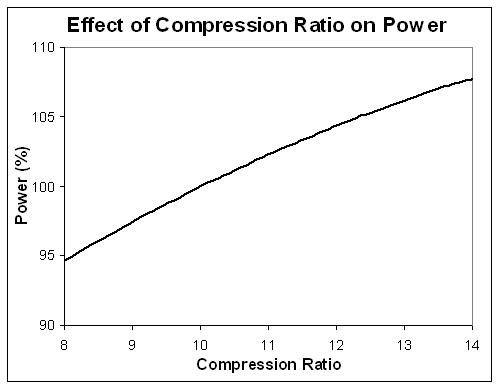
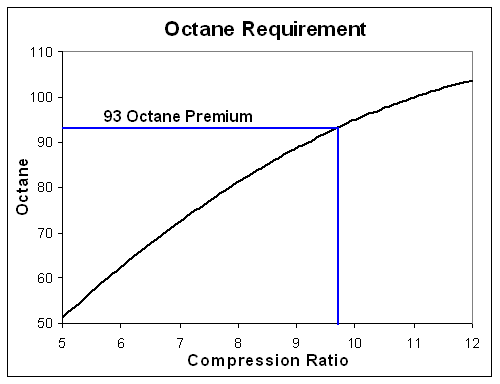
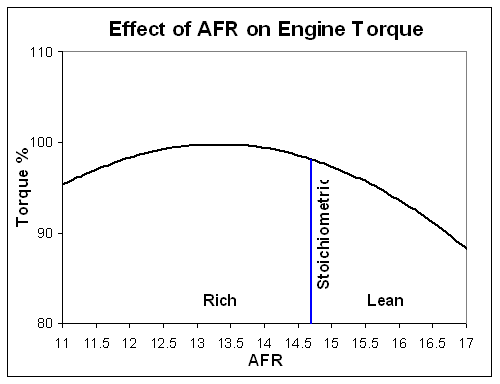
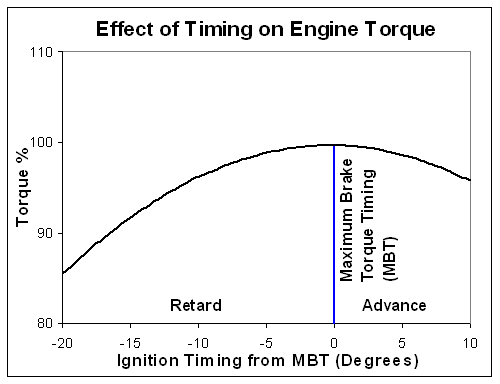
http://www.autospeed.com/cms/A_110830/article.html
http://www.misterfixit.com/deton.htm
http://www.autospeed.com/cms/A_110831/article.html
http://www.misterfixit.com/deton.htm
http://www.corvette-restoration.com/res ... ing101.pdf
http://www.streetrodstuff.com/Articles/Engine/Detonation/
http://www.babcox.com/editorial/ar/eb100145.htm
http://www.misterfixit.com/deton.htm
http://www.turbofast.com.au/racefuel10.html
http://www.kitcarmag.com/techarticles/eliminating_detonation_pre_ignition/index.html
back pressure tends to increase heat, simply because it reduces the full effect of the cooling the intake charge can provide

http://forum.grumpysperformance.com/viewtopic.php?f=56&t=495&p=613#p613
Taken from http://www.misterfixit.com/
WHAT IS DETONATION?
Detonation (also called "spark knock") is an erratic form of combustion that can cause head gasket failure as well as other engine damage. Detonation occurs when excessive heat and pressure in the combustion chamber cause the air/fuel mixture to autoignite. This produces multiple flame fronts within the combustion chamber instead of a single flame kernel. When these multiple flames collide, they do so with explosive force that produces a sudden rise in cylinder pressure accompanied by a sharp metallic pinging or knocking noise. The hammer-like shock waves created by detonation subject the head gasket, piston, rings, spark plug and rod bearings to severe overloading.
Mild or occasional detonation can occur in almost any engine and usually causes no harm. But prolonged or heavy detonation can be very damaging. So if you hear knocking or pinging when accelerating or lugging your engine, you probably have a detonation problem.
A DOZEN WAYS TO PREVENT DETONATION
1. Try a higher octane fuel. The octane rating of a given grade of gasoline is a measure of its detonation resistance. The higher the octane number, the better able the fuel is to resist detonation. Most engines in good condition will run fine on regular grade 87 octane fuel. But engines with high compression ratios (over 9:1), turbochargers, superchargers, or with accumulated carbon deposits in the combustion chamber may require 89 or higher octane fuel.
How a vehicle is used can also affect its octane requirements. If a vehicle is used for towing or some other application where the engine is forced to work hard under load, a higher octane fuel may be necessary to prevent detonation.
If switching to a higher octane fuel fails to eliminate a persistent detonation problem, it probably means something else is amiss. Anything that increases normal combustion temperatures or pressures, leans out the air/fuel mixture, or causes the engine to run hotter than normal can cause detonation.
2. Check for loss of EGR. The Exhaust Gas Recirculation (EGR) system is one of the engine's primary emission controls. Its purpose is to reduce oxides of nitrogen (NOX) pollution in the exhaust. It does this by "leaking" (recirculating) small amounts of exhaust into the intake manifold through the EGR valve. Though the gases are hot, they actually have a cooling effect on combustion temperatures by diluting the air/fuel mixture slightly. Lowering the combustion temperature reduces the formation of NOX as well as the octane requirements of the engine.
If the EGR valve is not opening, either because the valve itself is defective or because its vacuum supply is blocked (loose, plugged or misrouted vacuum hose connections, or a defective vacuum control valve or solenoid), the cooling effect is lost. The result will be higher combustion temperatures under load and an increased chance of detonation.
Refer to a service manual for the configuration and hose routing of your engine's EGR system, and the recommended procedure for checking the operation of the EGR system.
3. Keep compression within reasonable limits. A static compression ratio of 9:1 is usually the recommended limit for most naturally aspirated street engines (though some newer engines with knock sensors can handle higher compression ratios).
Compression ratios over 10.5:1 may create a detonation problem even with 93 octane premium gasoline. So unless an engine is being built to run on racing fuel, keep the compression ratio within a reasonable range for pump gasoline. This, in turn, may require using lower compression pistons and/or cylinder heads with larger combustion chambers. Another option would be to use a copper head gasket shim with the stock head gasket to reduce compression.
Retarding the cam timing can also lower cylinder pressures to reduce detonation at low r.p.m., but doing so hurts low speed torque which is not recommended for street engines or cars with automatics.
For supercharged or turbocharged applications, a static compression ratio of 8:1 or less may be required depending on the amount of boost pressure.
Another point to keep in mind is that boring an engine's cylinders to accept oversized pistons also increases the static compression ratio. So too does milling the cylinder heads. If such modifications are necessary to compensate for cylinder wear, head warpage or damage, you may have to use a thicker head gasket if one is available for the application or a head gasket shim (a dead soft copper spacer shim) to offset the increase in compression.
4. Check for over-advanced ignition timing. Too much spark advance can cause cylinder pressures to rise too rapidly. If resetting the timing to stock specifications doesn't help, retarding the timing a couple of degrees and/or recalibrating the distributor advance curve may be necessary to keep detonation under control.
5. Check for a defective knock sensor. Many late model engines have a "knock sensor" on the engine that responds to the frequency vibrations characteristically produced by detonation (typically 6-8kHz). The knock sensor produces a voltage signal that signals the computer to momentarily retard ignition timing until the detonation stops.
If the "check engine" light is on, check the vehicle's onboard computer system using the prescribed procedure for a "trouble code" that would correspond to a bad knock sensor (code 42 or 43 for GM, code 25 for Ford, or code 17 for Chrysler).
A knock sensor can usually be tested by rapping a wrench on the manifold near the sensor (never hit the sensor itself!) and watching for the timing change while the engine is idling. If the timing fails to retard, the sensor may be defective -- or the problem may be within the electronic spark timing control circuitry of the computer itself. To determine the cause, you'll have to refer to the appropriate diagnostic chart in a service manual and follow the step-by-step test procedures to isolate the cause.
Sometimes a knock sensor will react to sounds other than those produced by detonation. A noisy mechanical fuel pump, a bad water pump or alternator bearing, or a loose rod bearing can all produce vibrations that can trick a knock sensor into retarding timing.
6. "Read" your spark plugs. The wrong heat range plug can cause detonation as well as preignition. If the insulators around the electrodes on your plugs appear yellowish or blistered, they may be too hot for the application. Try the next heat range colder spark plug. Copper core spark plugs generally have a broader heat range than ordinary plugs, which lessens the danger of detonation.
7. Check for engine overheating. A hot engine is more likely to suffer spark knock than one which runs at normal temperature. Overheating can be caused by a low coolant level, a slipping fan clutch, too small a fan, too hot a thermostat, a bad water pump, or even a missing fan shroud. Poor heat conduction in the head and water jackets can be caused by a buildup of lime deposits or steam pockets (which can result from trapped air pockets).
8. Check the operation of the heated air intake system. The thermostatically controlled air cleaner's job is to provide a carbureted engine with hot air when the engine is cold started. This aids fuel vaporization during engine warm-up. If the air control door sticks shut or is slow to open so that the carburetor continues to receive heated air after the engine is warm, the added heat may be enough to cause a detonation problem -- especially during hot weather. Check the operation of the air flow control door in the air cleaner to see that it opens as the engine warms up. No movement may mean the vacuum motor or thermostat is defective. Also, check the heat riser valve to make sure it's opening properly, as it, too, can affect the air intake system.
9. Check for a lean fuel mixture. Rich fuel mixtures resist detonation while lean ones do not. Air leaks in vacuum lines, intake manifold gaskets, carburetor gaskets or the induction plumbing downstream of a fuel injection throttle can all admit extra air into the engine and lean out the fuel mixture. Lean mixtures can also be caused by dirty fuel injectors, carburetor jets clogged with fuel deposits or dirt, a restricted fuel filter or a weak fuel pump.
If the fuel mixture becomes too lean, "lean misfire" may occur as the load on the engine increases. This can cause a hesitation, stumble and/or rough idle problem as well.
The air/fuel ratio can also be affected by changes in altitude. As you go up in elevation, the air becomes less dense.
A carburetor that's calibrated for high altitude driving will run too lean if driven at a lower elevation. Altitude changes are generally not a problem with engines that have electronic feedback carburetors or electronic fuel injection because the oxygen and barometric pressure sensors compensate for changes in air density and fuel ratios.
10. Remove carbon deposits. An accumulation of carbon deposits in the combustion chamber and on the top of the pistons can increase compression to the point where detonation becomes a problem. Carbon deposits are a common cause of detonation in high-mileage engines, and can be especially thick if the engine consumes oil because of worn valve guides and seals, worn or broken piston rings and/or cylinder wear. Infrequent driving and not changing the oil often enough can also accelerate the buildup of deposits.
In addition to increasing compression, carbon deposits also have an insulating effect that slows the normal transfer of heat away from the combustion chamber into the head. A thick layer of deposits can therefore raise combustion temperatures and contribute to "preignition" as well as detonation.
Carbon deposits can often be removed from an engine that's still in service by using a chemical "top cleaner." This type of product is poured into an idling engine through the carburetor or throttle body. The engine is then shut off so the solvent can soak into and loosen the deposits. When the engine is restarted the deposits are blown out of the combustion chamber.
If chemical cleaning fails to remove the deposits, it may be necessary to pull the cylinder head and scrape the deposits off with a wire brush or scraper (be careful not to scratch the face of the cylinder head or engine deck!).
11. Check the boost pressure. Controlling the amount of boost in a turbocharged engine is absolutely critical to prevent detonation. The turbo wastegate bleeds off boost pressure in response to rising intake manifold pressure. On most late-model engines, a computer-controlled solenoid helps regulate the operation of the wastegate. A malfunction with the manifold pressure sensor, the wastegate control solenoid, the wastegate itself or a leak in the vacuum connections between these components can allow the turbo to deliver too much boost, which destroys the head gasket as well as the engine in short order if not corrected.
Improved intercooling can help reduce detonation under boost. The intercooler's job is to lower the incoming air temperature after it exits the turbo compressor. Adding an intercooler to a turbo motor that isn't intercooled (or installing a larger or more efficient intercooler) can eliminate detonation worries while also allowing the engine to safely handle more boost.
12. Change your driving habits. Instead of lugging the engine, try downshifting to a lower gear and/or accelerating more gradually. Keep in mind, too, that the engine and drivetrain have to be matched to the application. If you're working your engine too hard, perhaps you need a transmission with a wider gear ratio or a higher final drive ratio in the differential.
PRE-IGNITION
Another condition that is sometimes confused with detonation is "preignition." This occurs when a point within the combustion chamber becomes so hot that it becomes a source of ignition and causes the fuel to ignite before the spark plug fires. This, in turn, may contribute to or cause a detonation problem.
Instead of the fuel igniting at the right instant to give the crankshaft a smooth kick in the right direction, the fuel ignites prematurely (early) causing a momentarily backlash as the piston tries to turn the crank in the wrong direction. This can be very damaging because of the stresses it creates. It can also localize heat to such an extent that it can partially melt or burn a hole through the top of a piston!
Preignition can also make itself known when a hot engine is shut off. The engine may continue to run even though the ignition has been turned off because the combustion chamber is hot enough for spontaneous ignition. The engine may continue to run-on or "diesel" and chug erratically for several minutes.
To prevent this from happening, some engines have a "fuel cutoff solenoid" on the carburetor to stop the flow of fuel to the engine once the ignition is turned off. Others use an "idle stop solenoid" that closes the throttle completely to shut of the engine's air supply. If either of these devices is misadjusted or inoperative, run-on can be a problem. Engines with electronic fuel injection don't have this problem because the injectors stop spraying fuel as soon as the ignition is turned off.
CAUSES OF PRE-IGNITION
Carbon deposits form a heat barrier and can be a contributing factor to preignition. Other causes include: An overheated spark plug (too hot a heat range for the application). Glowing carbon deposits on a hot exhaust valve (which may mean the valve is running too hot because of poor seating, a weak valve spring or insufficient valve lash).
A sharp edge in the combustion chamber or on top of a piston (rounding sharp edges with a grinder can eliminate this cause).
Sharp edges on valves that were reground improperly (not enough margin left on the edges).
A lean fuel mixture.
Low coolant level, slipping fan clutch, inoperative electric cooling fan or other cooling system problem that causes the engine to run hotter than normal.
Detonation vs power
some of the major factors in your engines potential power, is the volumetric efficiency (how efficiently you fill and empty the cylinders) and the octane of the fuel used, compression ratio and detonation limits,
With detonation, prevention the main factors are
Ignition timing
Quench
FUEL OCTANE
DCR
and cylinder heat level
you’ll be fairly safe if you stay under
8.5:1 dcr at 170f degrees
8.25 dcr at 180f degrees
7.8:1 dcr at 210f degrees
and keep the quench in the .036-.043 range
heres some differant calculators
http://www.kb-silvolite.com/calc.php?action=comp2 http://www.wallaceracing.com/dynamic-cr.php
http://www.smokemup.com/auto_math/compression_ratio.php http://not2fast.wryday.com/turbo/compression/cranking_pressure.shtml
average the results
the numbers are for 92 octane premium gas run at a 14.7:1 a/f ratio
BTW heres a VERY SIMILAR GRAPH

[


http://www.misterfixit.com/deton.htm]http://www.misterfixit.com/deton.htm
I won,t get into the extensive details of why, but heres what you can DO,
(1) retard the cam 4 degrees, (this tends to reduce your dcr and lower cylinder temps due to slightly lower DCR)
(2) add a pusher fan or in some way REDUCE your coolant temp, this tends to reduce the detonation tendency
(3) richen the air/fuel ratio to about 12.7:1 this tend to increase power and reduce the potential for detonation due to cooler cylinder temps)
(4)change to a spark plug two ranges colder and change the plug gap to .040, this tends (at least in theory)to reduce the plugs tip temp due to a lower electrical resistance of the spark jumping the gap)
(5) add some fresh coolant,and flush the radiator and install a 160 degree t-stat, some water wetter or purple ice ,in that coolant might help
(6) add a good multi spark ignition and have your distributor curve checked/modified to advance smoothly from 1000rpm to full advance at 3000rpm
(7) check for and remove any vacuum leaks
(8)next time the heads are off POLISH the combustion chambers, remove any sharp edges and make sure the QUENCH falls in the .037-.043 range
(9)swapping too aluminum heads is a good way to reduce the detonation tendency in some engines
(10) swapping to a larger capacity and more efficient,aluminim radiator helps in some cases
richen up the mix to 12.5:1 for max power/tq vs low emmissions and you can cheat slightly as the cylinder temps go down slightly.
keep in mind ALUMINUM absorbs and allows the transfer of heat to the coolant at a much faster rate, so your less likely to have cylinder temps raise into the detonation range as quickly.
and it should be obvious that your igntion curve and spark strength will also effect results, personally Ive found the BETTER MSD multi strike ignitions keep the cylinders cleaner and less likely to detonate
http://www.daytona-sensors.com/tech_tuning.html





